- Register
- Log in to Tune-In
- Wishlist (0)
-
Shopping cart
(0)
You have no items in your shopping cart.
Beatles News
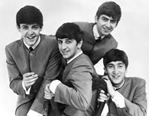
“Here Comes the Sun” is one of the most famous of all Beatles songs. It’s one of the Fab Four’s simple anthems of hope, like “Hey Jude,” “Let It Be,” and “All You Need Is Love.” It’s delicate, beautiful, and universal. It’s been covered by everyone from Gothic rock band Ghost to soul legend Nina Simone.
“Here Comes the Sun” almost became the Beatles song that conquered outer space. Sadly, it was not to be. NASA was more interested in Chuck Berry.
Noted skeptic Carl Sagan oversaw the construction of two NASA space probes: Voyager 1 and Voyager 2. Each of these probes included a disc of sounds representing Earth called the Voyager Golden Record. The record included sounds of storms, sounds of birds, and classical music compositions. If an extraterrestrial life form found the probes, they could use these discs to get a sense of life on the blue planet.
Source: cheatsheet.com
details
Disney has acquired the worldwide distribution rights to Peter Jackson’s documentary “The Beatles: Get Back” and will release the film in theaters in the U.S. and Canada on Sept. 4, 2020, Bob Iger announced Wednesday during the Disney shareholders meeting.
The film was previously announced and features never-before-seen footage from The Beatles’ recording sessions during their album “Let It Be,” including the band’s final live concert as a group, their iconic rooftop performance on London’s Savile Row.
Additional details for the film’s global release will follow.
“No band has had the kind of impact on the world that The Beatles have had, and ‘The Beatles: Get Back’ is a front-row seat to the inner workings of these genius creators at a seminal moment in music history, with spectacularly restored footage that looks like it was shot yesterday,” Iger said of the announcement. “I’m a huge fan myself, so I could not be happier that Disney is able to share Peter Jackson’s stunning documentary with global audiences in September.”
Source: Brian Welk/thewrap.com
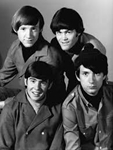
The Beatles aren’t just revered because they were great. They are also revered because of the influence they had and continue to have on numerous other artists. One of the earlier bands to take inspiration from them is the Monkees. The Monkees were a pop-rock band created to capitalize on the success of the Beatles’ films A Hard Day’s Night and Help! The Monkees starred in a self-titled television series inspired by the aforementioned films and then went on to release their own records.
Initially, the Monkees were actors who did not have much involvement in the creation of their records aside from providing vocals. Because of this, the Monkees are sometimes dismissed. However, some have claimed the Monkees managed to outsell the Beatles in 1967. Is this true? And what did the Beatles have to say about the Monkees?
Source: cheatsheet.com
details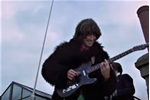
George Harrison may well have been one of the integral corners of the most triumphant band to ever grace the earth in The Beatles but he was still riddled with insecurity. The guitarist and songwriter had begun to find his feet in 1969 but was still fairly conflicted about his own guitar playing.
It may have been the Quiet Beatle living up to his name and keeping the spotlight away from him or perhaps that the class of guitarist he rose up with, the likes of Clapton and Hendrix, were just too far out of his league for him to even consider himself in the same bracket. Either way, he was never one to boast about his work on the fretboard.
When you consider this against the fact that alongside John Lennon, Paul McCartney and Ringo Starr he was the lead guitar in some of the most widely loved songs ever written it can be a hard fact to get your head around. Not to mention his impossibly brilliant solo work.
Source: Jack Whatley/faroutmagazine.co.uk
details
Speaking in a recent interview with Ovidiu Cernăuțeanu, one of the most iconic music stars of all time, The Beatles’ Paul McCartney, has made a special statement about his musical direction and revealed his favorite musical chord.
In the interview, Ovi asked a question to learn out if he had a favorite chord and Paul answered:
“A favourite chord… That’s a hard question! But I would say E is a pretty big favourite. It’s one of the early chords you learn. And in the early days, we used to play the Buddy Holly songs that we listened to a lot.
He used E and A a lot, so we used E and A lot too. It’s a very pure basic chord and on the guitar it rings out beautifully because the bottom string is open. So it has a resonance that some other chords don’t have.
Source: Ugur Ustaer/metalheadzone.com
details
“Got My Mind Set on You” was one of the biggest hits of George Harrison’s post-Beatles career. What many fans don’t know is it’s a cover of a song from the 1960s. The Beatles could have released their own rendition of the track during their prime.
However, it was not to be. Instead, George released his version of the song in the 1980s to great success. Here’s why the Beatles passed on “Got My Mind Set on You.”
According to The Independent, George became the first Beatle to visit the United States in 1963. He traveled to the country to see his sister, Louise, in Benton, Illinois. Salon reports that, while he was there, he picked up several records.
Among the records were some of Bobby Bland’s music, Booker T and the MGs’ first album, Green Onions, and James Ray’s 1962 debut album. George felt the latter was terrible. However, he enjoyed one song from it: “I’ve Got My Mind Set on You.”
Source: cheatsheet.com
details
George Harrison and Eric Clapton need no introduction. One was the under-rated Beatle, the other is arguably the best Blues artist and one of the best guitarists of all time. They had an amazing friendship, but that’s not all they shared. They also shared love, for the same woman! That woman is Pattie Boyd. This love triangle gave the world some of the greatest songs of all time. Let’s take a look at them.
The songs Clapton wrote for Pattie:
1. “Layla”
Layla is Clapton’s biggest ever hit. It was written for Pattie herself when she was married to George Harrison. But that’s not all…
Source: Ali Arslan Ahmed/dankanator.com
details
As Olivia Harrison remembers, her future husband, George, drove himself to work on the first day on his new job. It was October 1974, and George Harrison had flown to Los Angeles to visit the offices of the record label he’d just launched. The only problem was that no one had organized a welcoming party for him, but Olivia — then Olivia Arias, newly hired to work on the project — dashed out to the parking lot to greet him. “I thought somebody should,” she says. “He drove onto the lot by himself in this little car, and I thought, ‘Jeez, this is a big day in his life,’ and I went outside and said, ‘Welcome!’ He said, ‘What’s going on?’ He was very excited, but it was just me.”
In many ways, the story befits Harrison: Among his fellow Beatles, he was always the most low-key and publicity averse — the so-called quiet Beatle who also had a sly sense of humor. But his life after the band’s breakup was far from quiet; the early-to-mid-Seventies were some of the most creative and bustling years of his career. He went solo as soon as the group disbanded in 1970, organized the all-star Concert for Bangladesh at Madison Square Garden, a details
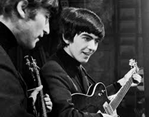
George Harrison was a true legend, both as a Beatle and as a solo artist. When he first began his solo career, some feared he wouldn’t find the success his bandmates had. However, he became a huge star in his own right.
Has his music lasted? Yes. In fact, fans still cared about his song “My Sweet Lord” over thirty years after its original release. Here’s how the tune hit number-one so long after it first hit the airwaves.
John Lennon and George Harrison on set of a show at Alpha Television Studios, Aston, Birmingham | David Farrell/Redferns
The Guardian reports George sadly passed away of cancer on Nov. 29, 2001. This created a huge demand for his record label, EMI, to rerelease is most iconic hit, “My Sweet Lord,” as a single. According to the Official Charts Company, “My Sweet Lord” originally hit #1 in the United Kingdom in 1971. Despite fan demand for a rerelease of the single, it didn’t happen right away.
Source: cheatsheet.com
details
The movie Yesterday—which airs on HBO tonight at 8 p.m. ET—might not be a perfect movie for film lovers, but for Beatles lovers, it’s nothing short of catnip. For one thing, the film—which is about a young musician who suddenly finds himself in a world where no one remembers the Beatles—is chock-full of Beatles songs. Like with Bohemian Rhapsody, Rocketman, and the rest of the recent jukebox movies, it’s hard not to love a movie that’s constantly playing your favorite songs.
For another, the Yesterday twist ending delivered Beatles fans a visual they’ve always longed to see: John Lennon in his 70s. Here’s how it happens: Yesterday—which was directed by Danny Boyle and written by Richard Curtis—is about Jack Malik (Himesh Patel), who becomes a famous musician using the Beatles’ music after he realizes he’s the only one who remembers the world’s most famous band. But soon, Jack starts running out of Beatles songs that he remembers how to play. As he becomes more and more famous, he also learns more and more about this weird Beatle-less alternate universe. One side effect? John Lennon never became a world-famous celebrity who was murdered a details

On April 18, 2020 one of the greatest solo debuts in rock history, Paul McCartney's McCartney, will receive a special 50th anniversary release in a limited-edition half-speed mastered vinyl pressing for Record Store Day.
Originally released in April 1970, one month before The Beatles' swansong Let It Be, McCartney saw Paul getting back to basics. Writing every song and playing every instrument (with backing vocals from Linda McCartney), the eponymous album represented a creative rebirth, bursting with new ideas, experiments, playfulness and freedom. Sonically, McCartney's bare-bones home recording aesthetic imbued the album with an authentic lo-fi spirit, a much sought after sound that continues to retain a contemporary edge 50 years on.
Source: prnewswire.com
details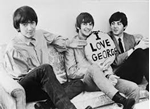
“Got My Mind Set on You” was one of the biggest hits of George Harrison’s post-Beatles career. What many fans don’t know is it’s a cover of a song from the 1960s. The Beatles could have released their own rendition of the track during their prime.
However, it was not to be. Instead, George released his version of the song in the 1980s to great success. Here’s why the Beatles passed on “Got My Mind Set on You.”
According to The Independent, George became the first Beatle to visit the United States in 1963. He traveled to the country to see his sister, Louise, in Benton, Illinois. Salon reports that, while he was there, he picked up several records.
Among the records were some of Bobby Bland’s music, Booker T and the MGs’ first album, Green Onions, and James Ray’s 1962 debut album. George felt the latter was terrible. However, he enjoyed one song from it: “I’ve Got My Mind Set on You.”
Source: cheatsheet.com
details
There’s a Beatles song for every situation in life. ‘Let It Be’ will comfort you when you’re down, ‘Yellow Submarine’ rekindles the spirit of youth, and ‘I Am the Walrus’ underlines the wonders of the imagination. But do you know which Beatle sang all of these songs?
The question “who’s your favourite Beatle?” is an enduring discussion topic at BBQs and dinner parties. For more serious fans, it’s also a litmus test for how well they’ll mesh with someone.
The Beatles’ stylistic versatility brings eternal freshness to their 13-album catalogue. And the fact all four members performed lead vocals gives the band a multi-dimensionality rarely seen in rock music.
Paul McCartney’s generally regarded as the pop guy. He’s got endless melodic fuel, can belt out a monster chorus, and is prone to a bit of silliness. John Lennon, while no slouch in the pop department, was known for his more emotionally revealing contributions to the band’s albums. Lennon’s nasal vocal tone was never a hindrance either – he could scream and shout just as well as he could perform tender, heart-baring ballads.
Source: details

Harry Styles revealed his admiration for The Beatles star Paul McCartney in an interview with Howard Stern, calling him “one of the greatest songwriters of all time”. The Falling singer recalled his wonder after seeing McCartney perform live at London’s O2 in December, saying he was blown away by the show.
“He clearly just loves it,” he explained. “You’re like, who ultimately do you want to be at the end of the day?
“You don’t want to be the guy who died. You don’t want to be the guy who’s like whacked out on drugs.
“You want to be the guy who’s 70 and playing for three hours because he can and he wants to and everyone’s loving it and he’s having fun,” he continued.
“I found it super inspiring, that show, actually. He’s incredible.”
Source: Minnie Wright/express.co.uk
details
On April 18, 2020 one of the greatest solo debuts in rock history, Paul McCartney's McCartney, will receive a special 50th anniversary release in a limited-edition half-speed mastered vinyl pressing for Record Store Day.
Originally released in April 1970, one month before The Beatles' swansong Let It Be, McCartney saw Paul getting back to basics. Writing every song and playing every instrument (with backing vocals from Linda McCartney), the eponymous album represented a creative rebirth, bursting with new ideas, experiments, playfulness and freedom. Sonically, McCartney's bare-bones home recording aesthetic imbued the album with an authentic lo-fi spirit, a much sought after sound that continues to retain a contemporary edge 50 years on.
Source: finance.yahoo.com
details